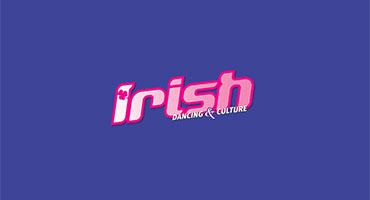Aim High! How to Improve Your Pointe and Toe Height
By Gina Pongetti Angeletti, Physical Therapist, Performing Arts Medicine Specialist
 Lines in the air and on the ground are what often separates a mediocre performance from a World champion in Irish Dance. From hip to toe, the straighter the lines, the better. An illusion of height while weight bearing such as in toe stands and while moving with birdies or trebles are great examples of how the thigh-shin-foot line can express finesse’. The illusion of leg length and height with free leg work such as scissors is yet another example of performance mastery.
Lines in the air and on the ground are what often separates a mediocre performance from a World champion in Irish Dance. From hip to toe, the straighter the lines, the better. An illusion of height while weight bearing such as in toe stands and while moving with birdies or trebles are great examples of how the thigh-shin-foot line can express finesse’. The illusion of leg length and height with free leg work such as scissors is yet another example of performance mastery.
Rising high up on your toes, as well as pointing your toes in the air, are a result of four things: how strong the muscles are to get the foot there in the foot itself, the strength of the muscles that co-contract such as quads, glutes and hamstrings, how flexible the ligaments are to allow the bones to move, and flexibility of the tissues to allow the ankle to attain the position! With a deficit in any of these areas, it becomes harder and harder to reach that last 10% of perfection!
Working daily in warm up as well as in class is important, but how you work contributes equally to success. Using the right muscles in groups will train the brain that the pattern “goes together”, such as quads to tighten the leg as well as calf to point the ankle and toe muscles to point the foot. Or when standing, that the glutes stabilize the hip, hamstring pull back the leg to vertical, the adductors pull the legs together (such as in toe stand or roll up) and then the quads and calves function as previous.
Unfortunately, sometimes we sacrifice quality for quantity. Kicking higher is great, but with a bent knee, then teaches the wrong neuro pattern. Getting on “top” of your toes more may be great, but if you need to bend your knees and buckle at your hips to get there, it is not worth it. With pushing too hard, one can create achilles tendon issues if using the calf muscles too hard to lift the heel, when in reality, it may be ankle front flexibility that is the issue, for example.
Teachers need to be equally as concerned about preparation exercises as they are about creating positive group muscle patterns. Dancers need to constantly check posture and movement quality by videotaping and replaying from multiple different angels, slowing down video to watch exact positioning, and even getting assessed by a physical therapist for deficits to work on with a great plan!
Check out these suggested exercises to do regularly to create good patterning and the best possible foot position!









